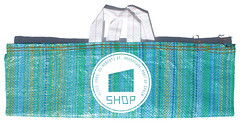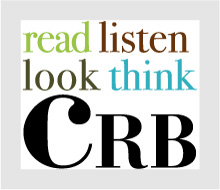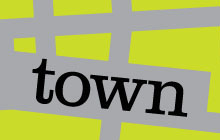Flag of My Mother’s Land
A statement from the artist:
“This flag pays tribute to the work of fellow Trinidadian artist Carlisle Chang (1921-2001) who was a part of the Independence Committee that created the design for the national flag when Trinidad and Tobago gained its independence from Britain in 1962. It gives me great pride that another Trinidadian of Chinese ancestry created this iconic emblem. This flag is also a symbol for the Chinese diaspora who came before me in the late 19th century to work on the estates under the British colonial rule and have since made Trinidad and Tobago their home.
Joshua Lue Chee Kong was born in Trinidad and Tobago. He studied graphic design at the Savannah School of Art and Design, where he received a BFA. After graduating, he worked for a year at Alfalfa Studio in New York, developing his skills as a graphic designer. He is presently living in Trinidad doing freelance work in branding, publications and design consultations.
The artist is investigating expanded ideas of national identity, transcending traditional racial and social barriers. He has a keen interest in history and culture and is presently exploring Trinidad and Tobago’s folklore, aspiring to making it relevant to the present global family, while preserving its own cultural uniqueness.
His work had been published in Asian Diasporic Visual Cultures and the Americas, ANNO book, See Me Here: A Survey of Contemporary Self-Portraits from the Caribbean, the Draconian Switch e-magazine, and two of his photographic images appeared on the cover of TIME magazine.
A statement from the artist:
“This flag pays tribute to the work of fellow Trinidadian artist Carlisle Chang (1921-2001) who was a part of the Independence Committee that created the design for the national flag when Trinidad and Tobago gained its independence from Britain in 1962. It gives me great pride that another Trinidadian of Chinese ancestry created this iconic emblem. This flag is also a symbol for the Chinese diaspora who came before me in the late 19th century to work on the estates under the British colonial rule and have since made Trinidad and Tobago their home.
“What
is this place called home? Is it the place where one was born and grew up, or is
it a place where a billion look-a-likes walk around? This flag represents
my roots and also my inner conflict of belonging. This feeling of disconnection
was particular strong during my artist residency at Red Gate Gallery in
Beijing. I was a stranger in my mother’s
land where I looked Chinese but did not feel Chinese because I was unfamiliar with the
language and to the culture.
“This
flag was stitched in China during my time in Beijing. It comprises of found
materials that were around my studio, from a street banner that was hung on the
sidewalk of the main street to discarded clothing. All the materials were
specially selected to represent my notion about China from the
Chinese characters on the red banner and the oriental patterns of the cloth.
“In
the end I just wanted to say even though my bloodline came from China, I will
always be a ‘Trinbagonian’ no matter what.”
Joshua Lue Chee Kong was born in Trinidad and Tobago. He studied graphic design at the Savannah School of Art and Design, where he received a BFA. After graduating, he worked for a year at Alfalfa Studio in New York, developing his skills as a graphic designer. He is presently living in Trinidad doing freelance work in branding, publications and design consultations.
The artist is investigating expanded ideas of national identity, transcending traditional racial and social barriers. He has a keen interest in history and culture and is presently exploring Trinidad and Tobago’s folklore, aspiring to making it relevant to the present global family, while preserving its own cultural uniqueness.
His work had been published in Asian Diasporic Visual Cultures and the Americas, ANNO book, See Me Here: A Survey of Contemporary Self-Portraits from the Caribbean, the Draconian Switch e-magazine, and two of his photographic images appeared on the cover of TIME magazine.









No comments:
Post a Comment